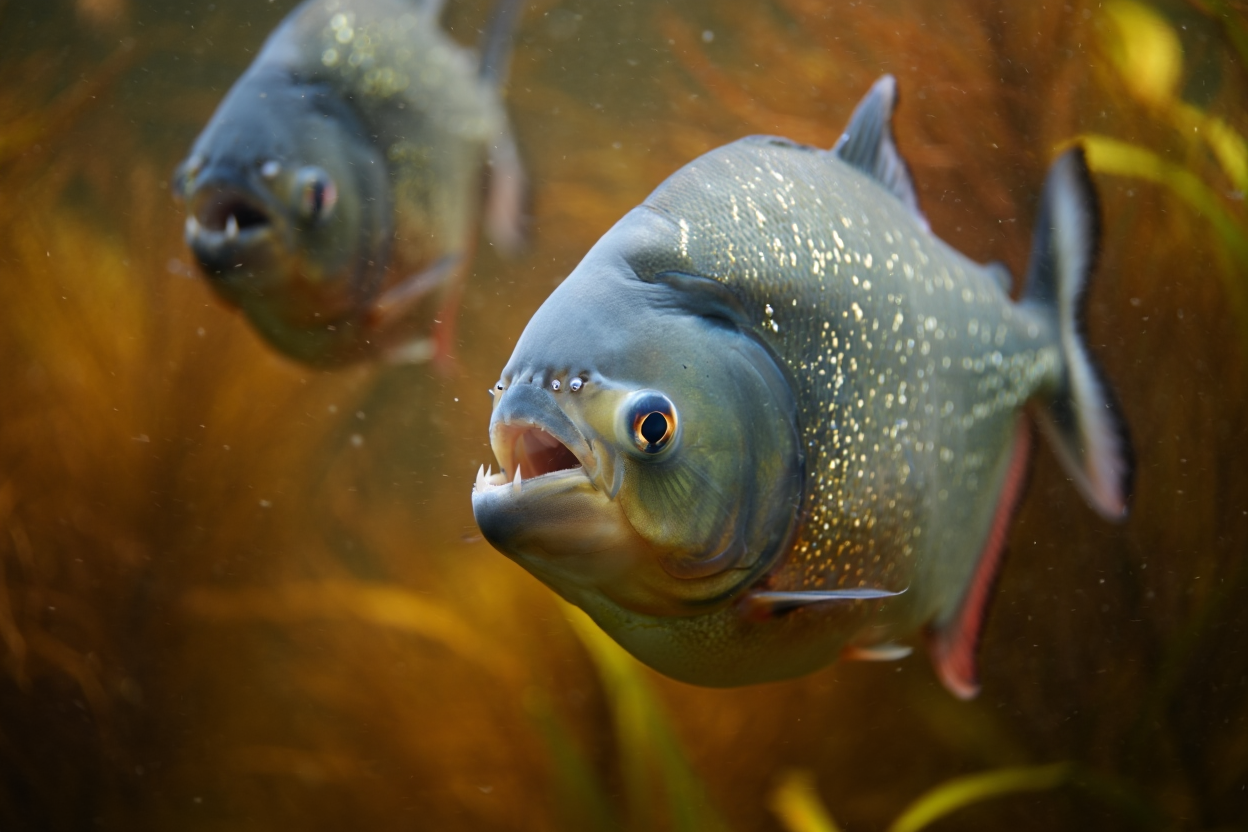Meet the Fish You Don’t Want to Mess With
Haven’t you heard about the majestic wonders of the ocean? Let’s be real. With some of these species swimming around, you may think twice before touching the water’s surface with your toe.
These underwater warriors are equipped with features such as deadly bites and shocking jolts. They might not be the most glamorous creatures in the sea, but their survival skills are clearly impressive. What fish would give Aquaman a run for his money? These are the ones on the radar. Ready to dive into the world of dangerous fish?
Let’s go!

Electric Eel (Electrophorus electricus)
The electric eel is not exactly what the name suggests. Rather than a true eel, it’s a type of characin fish (cousin to piranhas and neon tetras). With elongated, sleek bodies, this South American fish comes with a punch of electricity that stuns its prey. It grows to a shocking 9 feet in length, and it weighs as much as 48.5 pounds.
Their body is long, cylindrical, and scaleless, and their color is usually gray-brown with a red underside. The tails make up about four-fifths of their total length, and this is where the magic happens. This region is lined with electric organs that can discharge a current of 300-650 volts. Such intensity is enough to make you jump if you’re unlucky enough to be on the receiving end.
However, this powerful shock is usually reserved for the fish they hunt. The eel moves through water at a relaxed pace, using its undulating anal fin. You can typically find it (but you better not) in slow-moving, fresh waters where it surfaces every few minutes to gulp some air. Their mouths act like a lung, rich in blood vessels.
Even if it may seem like the electric eel is just a slowpoke, it’s a deadly predator. Known as varzea, it’s one of the top fish in the whitewater flooded forests of the Amazon. Here, it makes up 70% of the fish biomass. When they hunt, the electric shock can stun a fish long enough for them to quickly suck them into their mouth. Sometimes it may even skip the shock and just gulp them down faster than they can even react.
Their jolts are not only for hunting, as it also help them communicate with other electric eels and locate hidden prey by inducing them to twitch.
While the electric eel might be sluggish, it’s never harmless. If you don’t want to feel the shock for yourself, make sure you stay clear of this electrifying fish.
Atlantic Manta (Manta birostris)
Known as devil rays, they belong to the family Mobulidae, and their appearance is hard to forget. They have wide, flattened bodies and large, wing-like pectoral fins. Manta rays glide effortlessly through the water. With these fins as extensions to their bodies, they resemble the devil’s horns. Some species can have a tail equipped with one or more stinging spines, and they are generally harmless to humans.
They are found in warm ocean waters around continents and islands, and they can swim gracefully near the surface. Flapping their pectoral fins, they propel themselves. Some of them leap and perform somersaults out of the water, putting on a mesmerizing show.

Piranha
Also known as piraya or caribe, piranhas are a whole group of over 60 species of carnivores found in South American rivers and lakes. They have a reputation for ferocity (that’s often exaggerated). Movies such as Piranha (1978) have probably painted them as savage, indiscriminate killers, but most piranha species are scavengers or primarily feed on plant matter.
Piranhas can be found from northern Argentina to Colombia, as the Amazon River is their home. The most notorious is the red-bellied piranha, which has the most powerful jaws and sharpest teeth. They can grow up to 20 inches and are known to hunt in large groups. This group may converge in a feeding frenzy to attack a large animal, but red-bellied piranhas usually target prey that’s only a bit larger or smaller than themselves. They use signaling for others to join in an attack, likely using sound, as piranhas have excellent hearing.
Stonefish
They are venomous marine creatures who belong to the genus Synanceja and the family Synancejidae. They are typically found in the shallow waters of the tropical Indo-Pacific. With their slow-moving, bottom-dwelling ways, they prefer hiding among coral, rocks, mud flats, or estuaries.
Stonefish are dangerous due to their camouflage. They are difficult to spot, and they can inject venom through grooves in their dorsal fin spines when they are stepped on. Their stings bring excruciating pain and, in some cases, can be fatal. Even if there are other species of robust and warty fish in the Synancejidae family, the stonefish is the most infamous due to its potency and stealth.
Tigerfish
A name given to several species considering their aggressive nature, striking appearance, and predatory behavior, they are notorious for their fierce temperament.
They are often marked with lengthwise stripes, depending on the species. They have a swift, carnivorous nature, resembling salmon. They possess sharp, daggerlike teeth that stick out even with their mouth closed.
With around 5 species of tigerfish swimming around, the largest is Hydrocynus goliath. It can grow over 6 feet in length and weigh up to 125 pounds. The smaller H. vittatus, on the other hand, is considered one of the best game fish in the world.
Moray Eel
There are over 80 species of moray eels that have been found across tropical and subtropical seas. They live in shallow waters among rocks and reefs, usually hiding in crevices.
Moray eels are different from the rest of the eels, with a small, rounded gill opening and lacking pectoral fins. Their thick and scaleless skin combined with their wide mouth and sharp teeth, makes it easy for them to grab and hold onto their prey.
Their sharp teeth make them capable of inflicting serious wounds on their enemies, including humans. While they may only attack humans when provoked, this doesn’t make them less aggressive.
They are strikingly colored or patterned, and most species grow to about 5 feet in length. The biggest one is Thyrsoidea macrurus from the Pacific, reaching 11.5 feet. In some areas, morays are eaten, but their flesh can sometimes be toxic and cause illness or death. Muraena helena, found in the Mediterranean, used to be considered a delicacy by the ancient Romans.

Great White Shark
Carcharodon carcharias, often known as the white shark, is one of the most feared and powerful predators in the ocean.
Famously portrayed as the villain in movies such as Jaws (1975), this shark managed to develop a notorious reputation. We know surprisingly little about their behavior and life, despite the widespread fear.
Fossil records suggest that this species has existed for 18-12 million years, and they date back to the Miocene Epoch.
In areas where they are most common, white sharks cause numerous unprovoked and sometimes fatal attacks on swimmers, divers, surfers, or even small boats. They typically take a single bite and then retreat. In most cases, they don’t return for a second bite.
Victims who receive a moderate bite may have enough time to reach safety, but a large bite can lead to severe damage, resulting in death. Studies of white sharks attacking the western United States indicate that about 7% of attacks are fatal. Fatality rates in places like South Africa can exceed 20%, and in Australia, 60%.
Researchers believe that these attacks are driven by the shark’s curiosity, and others think the shark may mistake humans for their natural prey, like seals or sea lions.
Have you seen Wild Fish Wild Places? It’s a series you can find on Amazon, and it’s such a fun way to dive into the fishing world—literally. You get to explore beautiful locations, learn about different species, and pick up all kinds of tips and stories from passionate anglers. Even if you’re not a hardcore fishing fan, there’s something super relaxing and adventurous about it.
Read next: Bites, Stings & Surprises: 7 America’s Most Venomous States












